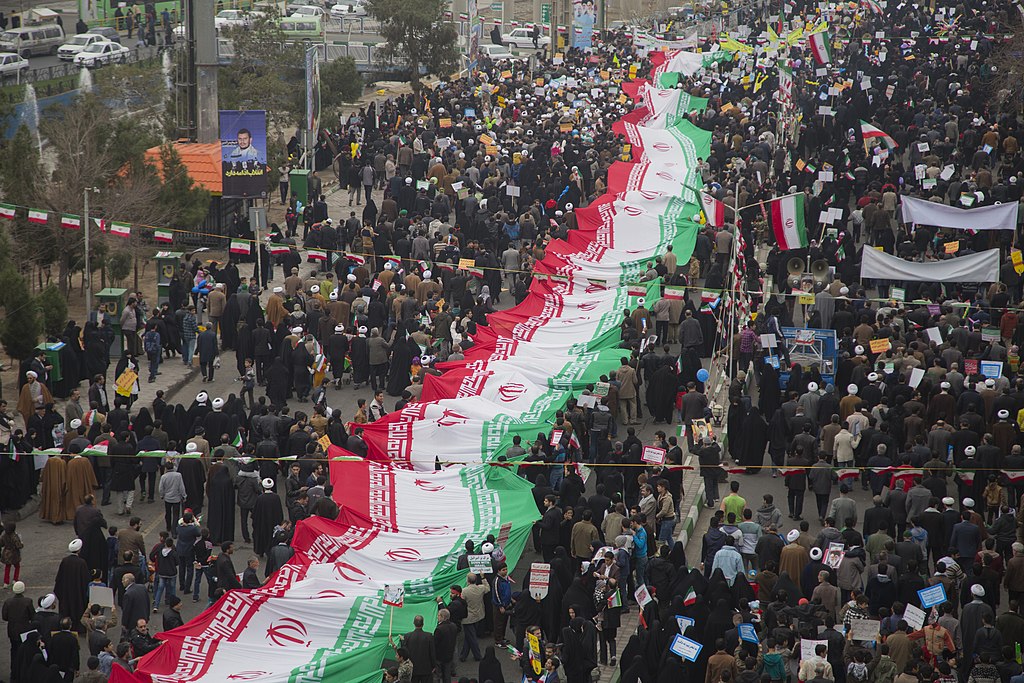This past January in Tehran, hundreds of cars and motorbikes paraded the streets celebrating the 43rd anniversary of the 1979 Iranian Revolution. Led by the now-deceased Ayatollah Ruhollah Khomeini and his band of fanatics, revolutionaries overthrew the Shah of Iran and created the Islamic Republic. The revolution transformed Iran from an ally of Israel and a safe haven for Iranian Jews into a Nazi-like regime seeking to wipe out the world’s Jewish population. 43 years after the revolution, the question remains: why did the country of Iran, with no history of contempt toward Israel and the Jewish people, become the chief global proponent of anti-Semitism?
To understand why Iran continues to be an enemy towards Israel and the Jewish community43 years after the Islamic Revolution, one must understand the ideology of the Revolution, Ayatollah Khomeini.
Khomeini believed the Islamic world’s decline could be attributed to a plot by Britain and the United States to make Zionism the dominant ideology of the Middle East. The Ayatollah developed a Hitler-esque, vitriolic obsession with Israel and the Jews, claiming that they had destroyed the Islamic world from within.
Khomeini viewed the Shah’s plan to Westernize the Iranian state as evidence of global conspiracy. He believed that the imputes for the Shah’s reforms was the appeasement of Israel and other Zionist influences that supported the monarchy.
Khomeini’s Islamic anti-Semitic beliefs and hatred of Israel were constantly on display, rallying Iran’s militant Shiite community to call for the death of Israel andJews and the creation of an Islamic Republic.
Khomeini and his Shiite acolytes viewed Israel and its support from the United States as the primary obstacle to the Islamic republic’s expansion into other Arab countries and the rest of the Middle East. From the perspective of the founders of the Islamic Revolution, proxy groups such as Hezbollah in Lebanon and Hamas in the Gaza Strip were vitally important organizations as they could enact the ideals of the Revolution. Ayatollah Khamenei, like his predecessor, believed that by engaging in a war of attrition with Israel through terrorist-backed proxies, Israel would eventually collapse.
Just as Hitler and the Nazi Party called for the destruction of Jews and other minorities to purify Germany and the world, the Islamic Revolution under Khomeini called for the liberation of Iran, Jerusalem, and the world from impure groups, such as the Jews, the Baha’i religion and other minorities. Even today, 43 years after the Iranian Revolution, the current regime still seeks to complete this objective at all costs.
It was no surprise that Iranian Jewish businessmen like Habib Elghanian were rounded up and killed in the first wave of civilian executions of the 1979 Revolution. Many Iranian Jews were arrested and sentenced to death for unjust charges, such as being in cahoots with Israel and Zionists. Iranian Jews like Habib Elghanian, who did not experience the Holocaust like so many European Jews did, now faced Nazi-like firing squads, kangaroo courts, and the theft of their posessions, rekindling memories of Nazi Germany.
When the dust settled and revolutionaries took control of Iran, the country turned from a haven for Iranian Jews and other minorities into an anti-Semitic, theocratic dictatorship that tramples on the liberty of its citizens. Iran still celebrates, commemorates, and upholds Khomeini’s revolution, quashing any hope for an Iran free of anti-Semitism.
Luckily, Arab states like Bahrain, United Arab Emirates, Sudan, and Morocco have become allies and created peace agreements with Israel to deter Iran’s growing influence. Arab countries that were once heavily anti-Semitic are now turning a new leaf, opening Holocaust museums, combating antisemitism and engaging in economic and military activities with Israel.
For many Iranian Jews living in exile or who have lost family members to the Revolution, the anniversary of the Revolution can be considered a catastrophe or “nakba” that still permeates to this day.
“The views expressed in this post reflect the views of the author(s) and not UCLA or ASUCLA Communications Board.”

